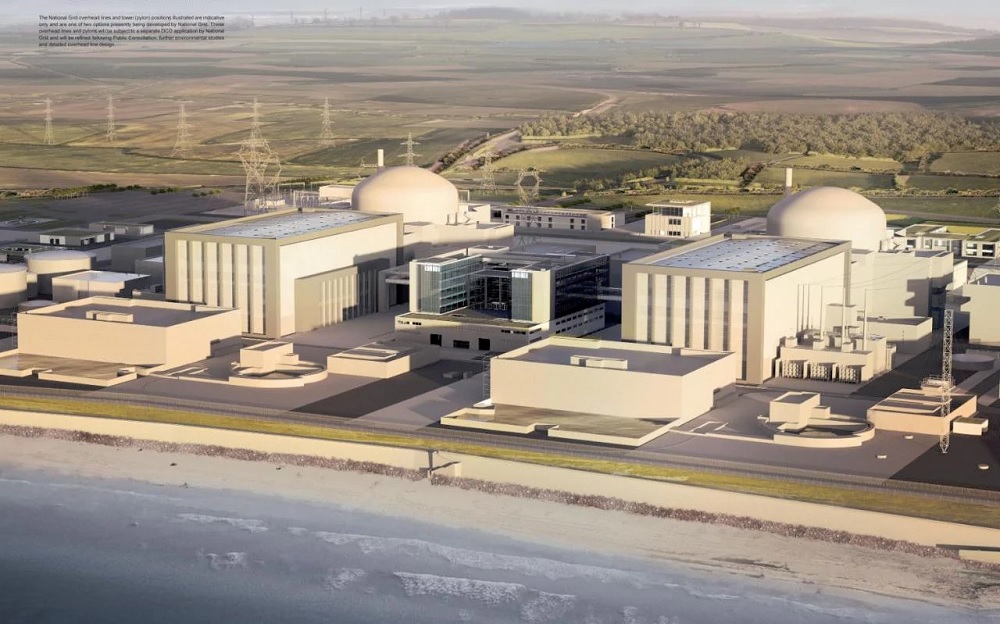Battle to block Hinkley C mud dump returns to the Senedd

Proposals to dump hundreds of thousands of tonnes more mud from the construction of a new nuclear power plant two miles off the Cardiff coast will be discussed in the Senedd tomorrow.
Last year a petition opposing EDF Energy’s application demanded a full Environmental Impact Assessment (EIA) before the dump could be licensed.
The petition gained almost 10,700 signatures and forced a Senedd debate.
In 2018 EDF were granted permission to dump at the Cardiff Deep Grounds inshore disposal site despite fierce opposition and an earlier debate in the Senedd.
Geiger Bay, a non-partisan coalition of environmental groups and individuals campaigning against the plans, say EDF’s impact assessment is inadequate and complain that Natural Resources Wales (NRW, the Welsh environmental regulator) has tried to limit the scope of the assessment so it covers only the dumping operation.
They say an assessment of the whole “project” is required, not just the excavation of the cooling system, where the mud that could be dumped off Cardiff Bay originates. The campaigners also claim NRW is excluding consideration of mud which is carried ashore after it is dumped.
Dispersal
NRW has accepted much of the mud dumped in the Cardiff Grounds does not disperse to sea but instead deposits contaminants on existing mud or blows onto the land via sea spray. Scientists involved with Geiger Bay say they must address concerns about dispersal of the sediment around the estuary and the transfer of pollutants (both radioactive and chemical) onto the land and into human foodstuffs as well as marine life.
Professor Keith Barnham of Imperial College, London has provided evidence of Plutonium MicroParticles (PMPs) in the mud from the construction of the new plant which is being built on the site of the decommissioned Hinkley Point A, which cannot be detected by the gamma tests that were used before the 2018 dredge and dump. These were produced and discharged from Hinkley-A in the 1970s and ’80s.
Professor Barnham’s report poses questions for the Environment Agency which campaigners say remain unanswered. PMPs are dense with heavy metal, so drop to the seabed near Hinkley Point. In addition, published UN data show huge numbers of microparticles are routinely emitted into the air from reactors.
Most of these are uranium and such particles have detected near Hinkley Point.
The Senedd’s petitions committee will also be provided with evidence from the charity Children with Cancer UK showing that highly accurate CR-39 detectors which reveal radioactive microparticles, should be used in testing the samples of mud from the Hinkley site.
Vital
NRW asked for CR-39 detectors to be used but the Westminster Government laboratory, the Centre For Environment, Fisheries & Aquaculture Science refused. In response, Geiger Bay is asking the Petitions Committee to tell NRW the scope of tests for alpha-radioactive particles is too narrow and that it is vital to include CR-39 testing.
Geiger Bay also says Prof Henshaw of Bristol University, a leader in the CR-39 technique, has submitted evidence and agreed to test portions of the core samples if contracted by NRW.
The group claims EDF has failed to comply with the regulations and NRW needs further information to properly consider the application.
Additionally, they highlight a lack of expertise within NRW in planning law (which covers EIAs) and suggest NRW should therefore seek the views of bodies which do have expertise, including Cardiff and Vale of Glamorgan Councils and the Welsh Govt planning section.
Cian Ciaran from Geiger Bay said: “We’ve had a simple message as a campaign from day one: ‘Absence of evidence is not evidence of absence’ and yet here we have NRW, Welsh government and the Hinkley group committee, EDF, CEFAS et al seemingly either unable or unwilling to demand or satisfy the burden of proof by a simple procedure.
“That should be a minimum requirement given the seriousness of the issues at hand.”
Portishead
In January EDF announced its intention to apply to the Marine Management Organisation (MMO) for a licence to dump at Portishead, off the Somerset coast, whilst also making a further application to dump at the Cardiff site. No reason has been given by EDF for the Portishead proposal.
Historically the Portishead site was always used for the disposal of port and harbour navigation channel dredging and there is no evidence it was ever used for the disposal of more controversial wastes. According to the MMO, the site has been disused for some years but is still “open” for disposal permit applications.
EDF claim the sediment it is seeking to dispose of is “not radioactive under law”, but campaigning groups point out the UK Government’s official radioactivity monitoring reports annually confirm the presence of human-made radioactivity, derived largely from over 50 years of discharges to sea from the Hinkley Point reactors, including Plutonium, Caesium 137, Tritium, Technetium 99 and Carbon 14 into the Bridgewater Bay sedimentary and marine environment.

Support our Nation today
For the price of a cup of coffee a month you can help us create an independent, not-for-profit, national news service for the people of Wales, by the people of Wales.




